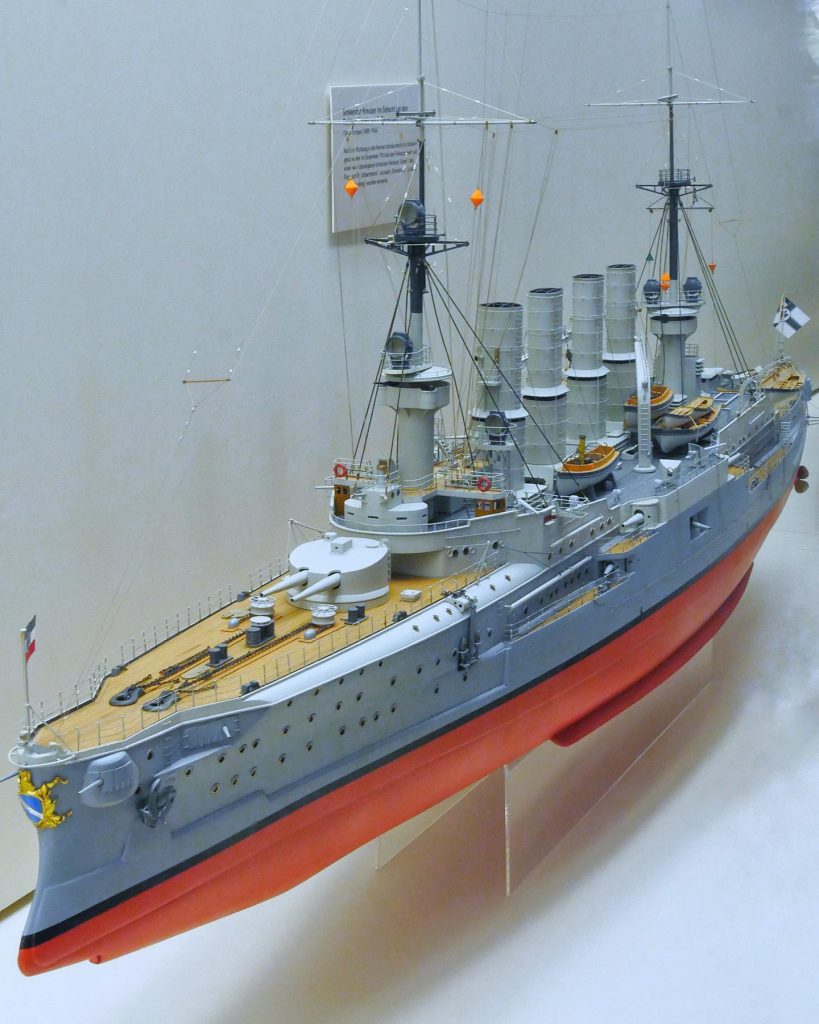
This model of the armoured cruiser SMS „Scharnhorst“ is yet another masterpiece built by Helmut Schmid in a scale of 1:100. It is displayed on deck 5 of the museum.
With the beginning of World War I, the East Asia Squadron that protected the colonial interests of the German Empire in that region was mobilized to return home. The squadron was mainly composed by SMS „Gneisenau“, the armoured cruiser SMS „Scharnhorst“ and the light cruisers „Emden“, „Leipzig“ and „Nürnberg“. All under the command of Admiral Maximilian von Spee, that ordered the ships to gather in a course to the Southeast. On their way, Battle of Coronel took place on November the 1st 1914 off the coast of Chile. The German squadron defeated a British one, killing over 1600. After that they steamed south to Cape Horn, crossing to the Atlantic. The Royal Navy had reacted to the defeat at Coronel detaching a squadron from the Grand Fleet, with the battlecruisers HMS „Invincible“ and HMS „Inflexible“ at its core. They steamed to the Falklands and awaited the Germans. Von Spee had decided to attack the Falklands, apparently based on bad intelligence reports. The German squadron was surprised by the presence of the superior British squadron in Stanley on December the 8th. Outgunned and outrun by the battlecruisers, „Scharnhorst“, „Greisenau“, „Nürnberg“ and „Leipzig“ were sunk after pursuit. The losses and damage to the British squadron were minimal. It is calculated that over 2200 Germans died in the action. Among them were von Spee and his two sons.
Von Spee’s flagship, SMS „Scharnhorst“, had been completed at the Blohm & Voss shipyard, Hamburg, in 1907 and entered service in the High Seas Fleet on 1 May 1908. She represented the culmination of the armoured cruiser design in Germany. The development of the dreadnought battleship and the battlecruiser had made her outdated before being commissioned. As a comparison: she and her sister „Gneisenau“ had a top speed of 22,5 knots and 21 cm main guns, while the two battlecruisers of the Invincible class they met at the Falklands did 25,5 knots and 30,5 cm main guns.
